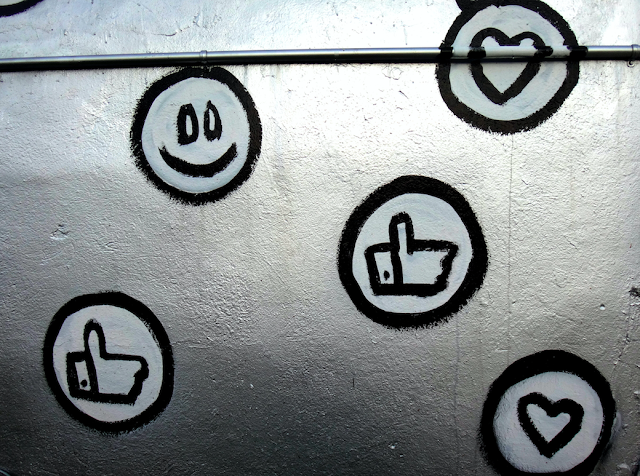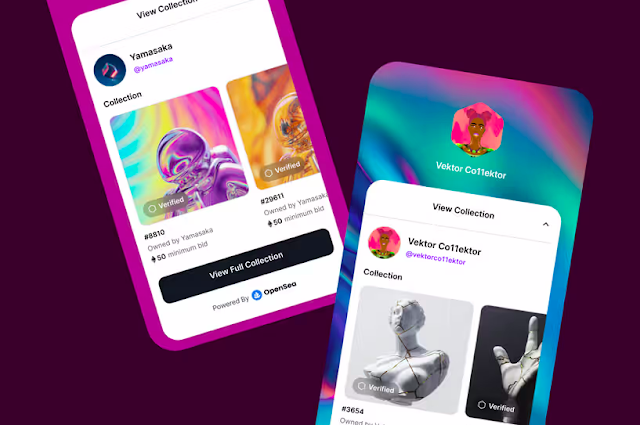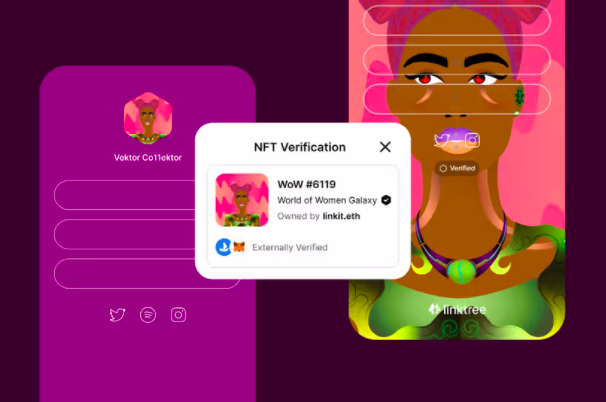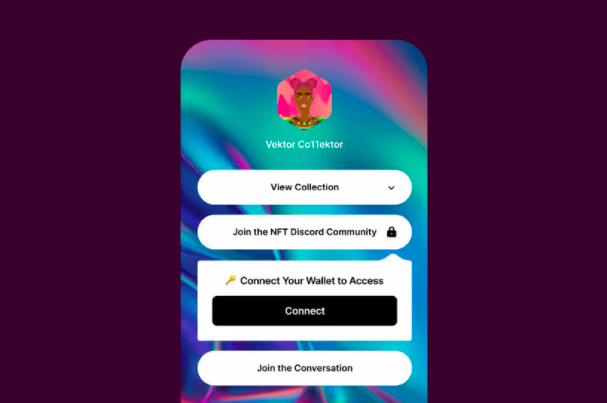2022 appears to be the year when NFTs gradually enter the mainstream social media market. In January, Twitter launched NFT-based verification of profiles, and at the end of May, Instagram announced NFT in-app options. Just a week after, Linktree joined the group.
The link-in-bio service has partnered with OpenSea to add a number of NFT-related features to its platform.More Latest NFT News.
Connecting Web2 users to Web3 projects
More than 23 million Linktree users now can use three new NFT tools to connect their Web2 customers with their Web3 projects.
First is an NFT Gallery Link. This tool allows users can show the gallery with up to six NFTs within their Linktree. At the moment, just those using the Metamask wallet and OpenSea marketplace are available for this feature. However, Linktree says that more options are forthcoming.
NFT GALLERY. SOURCE: LINKTREE
Many NFT holders have built online identities based on their work, using them as PFPs on social media websites such as Twitter. This identity may be seen on Linktree. The NFT Profile Tool for Background and Image allows users to stylize Linktree using their NFTs to strengthen the Web3 brand further. Plus, Linktree confirms each NFT by presenting the hexagonal frame and badge.
NFT PFP VERIFICATION. SOURCE: LINKTREE
The third feature added to Linktree includes NFT Locks. Utilizing this option, creators can secure their Linktree links using the contact number. This means that only those who own an NFT belonging to a particular collection can access the private links. The idea will help make it simpler for artists to offer benefits such as merchandising or exclusive material to the owners who own their NFTs.
NFT LOCK. SOURCE: LINKTREE
NFTs provide solutions for creators of content.
In the coming four years, the NFT market is projected to increase by $147.24 billion. However, NFTs and other Web3 technologies are attracting companies such as Linktree and Meta for many reasons beyond their potential market. Digital tokens hold the potential to create new networks of collectors, creators and influential social media users.
They also benefit from the creators who profit too. NFTs can solve a lot of the challenges that content creators face, such as the commodification of their digital media, the heavy dependency of creators on platforms, and network-related effects, which make it difficult for newer creators to get their foot in the market. They also have the potential to connect creators and customers as never before.
In the form of a press announcement, Alex Zaccaria, CEO of Linktree, said, "Web3 and the power of blockchain have given creators the opportunity to earn money from their passions as well as build communities. As the creator community shifts to this new version of internet technology, we're thrilled to work with Linktree to be a place for creators to collect their digital assets and show their most important ideas."
The future will only be revealed as these tools could alter the social media world of Web3.




Comments
Post a Comment